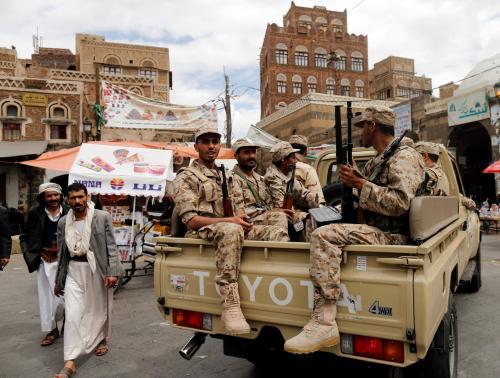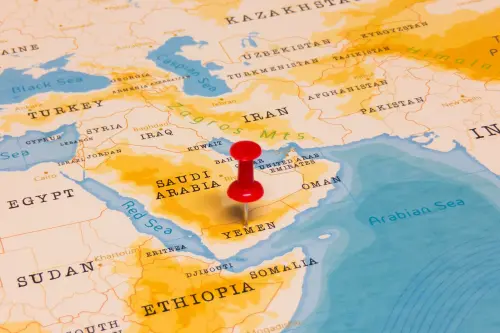A debate is underway inside the Pentagon about the prospects of scaling back or temporarily suspending the maintenance of no-fly zones in northern and southern Iraq. Such a review is long overdue and if implemented would allow the U.S. and Great Britain to refocus its military objectives in the Gulf.
At their inception during the early `90s, no-fly zones were created to provide a safe haven for Kurds and Shiite Muslims and to contain the regime of Saddam Hussein. Today they represent less a shield for persecuted ethnicities than a burden and an embarrassment for the U.S. and Great Britain. No-fly zones have been successful in that the Iraqi military does not threaten Kurds or Shiites from the air. Unfortunately, unless the Allies are willing to maintain military-exclusion zone—prohibiting the movement of heavy armor and military convoys—the no-fly zones remove only one weapon from the Iraqi military. They do not deter the type of destruction visited upon the Kurdish uprising in the fall of 1995, which the Iraqi Republican Guard conducted in under a week without the assistance of aircraft. That the no-fly zones offer no protection to people on the ground was obvious to those Kurds who watched Allied planes circle overhead while Saddam’s armored divisions crushed them below.
No-fly zones have been successful in that the Iraqi military does not threaten Kurds or Shiites from the air. Unfortunately, unless the Allies are willing to maintain military-exclusion zone?prohibiting the movement of heavy armor and military convoys?the no-fly zones remove only one weapon from the Iraqi military. They do not deter the type of destruction visited upon the Kurdish uprising in the fall of 1995, which the Iraqi Republican Guard conducted in under a week without the assistance of aircraft. That the no-fly zones offer no protection to people on the ground was obvious to those Kurds who watched Allied planes circle overhead while Saddam’s armored divisions crushed them below.
No-fly zones also give a tactician like Saddam the initiative in provoking airstrikes against his country. It is as simple as turning the switch of a tracking-radar from off to on, or launching a missile at an airborne aircraft, and then waiting for the U.S. reaction—during normal operations, Americans do all the bombing. Furthermore, due to the manner in which Saddam’s military places radar and anti-air missile batteries near mosques or populated areas, no-fly zones also allow the Iraqi dictator to produce expected civilian victims from the bombings whenever he needs to redirect hostilities toward external enemies.
Due to their low-level nature, the bombings remain background noise in the overall picture of confronting Iraq. However, when they make the news they do so in a way that is dubious for the Allies and beneficial to Saddam. The headlines range from: civilians killed by targeting error, Iraqi air defense assets being placed in civilian areas or the munitions were ineffective and deficient, as was the case with the Feb. 16 attack. With each of these incidents, support and credibility for U.S. policy in the Gulf is eroded.
Worse yet, no-fly zones are a constant danger to the those who support them. Though no pilot has been shot down in the more than 150,000 sorties flown, luck will eventually run out. According to U.S. military officials, some of the planes used are single-engine, and the law of averages say that an accident due to engine failure should have occurred by now. Inevitably, an American or British pilot will be killed or captured and Saddam will have a corpse or hostage that further highlights his defiance. While concerns of pilot safety should not halt the flights, when the reported effect of the flight schedules on the overall readiness of the U.S. Air Force and Navy is considered, a pause would be welcomed by the effected services.
No-fly zones are a counterproductive mission in search of an overall strategy of dealing with the threat Sadaam Hussein poses to the region and his people. To refocus this strategy the number of flights made by the U.S. and Britain should be markedly reduced or halted altogether. Consequently, the Bush administration should tell Baghdad that if its military resumes aggressive flights, no-fly zones will be instantly reconstituted. Combat aircraft flying in the zones will be targeted along with ground facilities used to support it.
While Washington and London may believe they are standing up to Saddam by flying figure “eights” over northern and southern Iraq, it is no longer a mission worth maintaining. By halting or decreasing the flights the Allies will not be lessening its pressure on the Iraqi regime or its military, because they were never a threat to it in the first place. It will, however, give the shrunken Gulf War coalition the standing to finally deal with Iraq in a comprehensive manner that does not infuriate its neighbors in the Middle East.



Commentary
Op-edFiring Blanks at the Iraqi Military
March 29, 2001